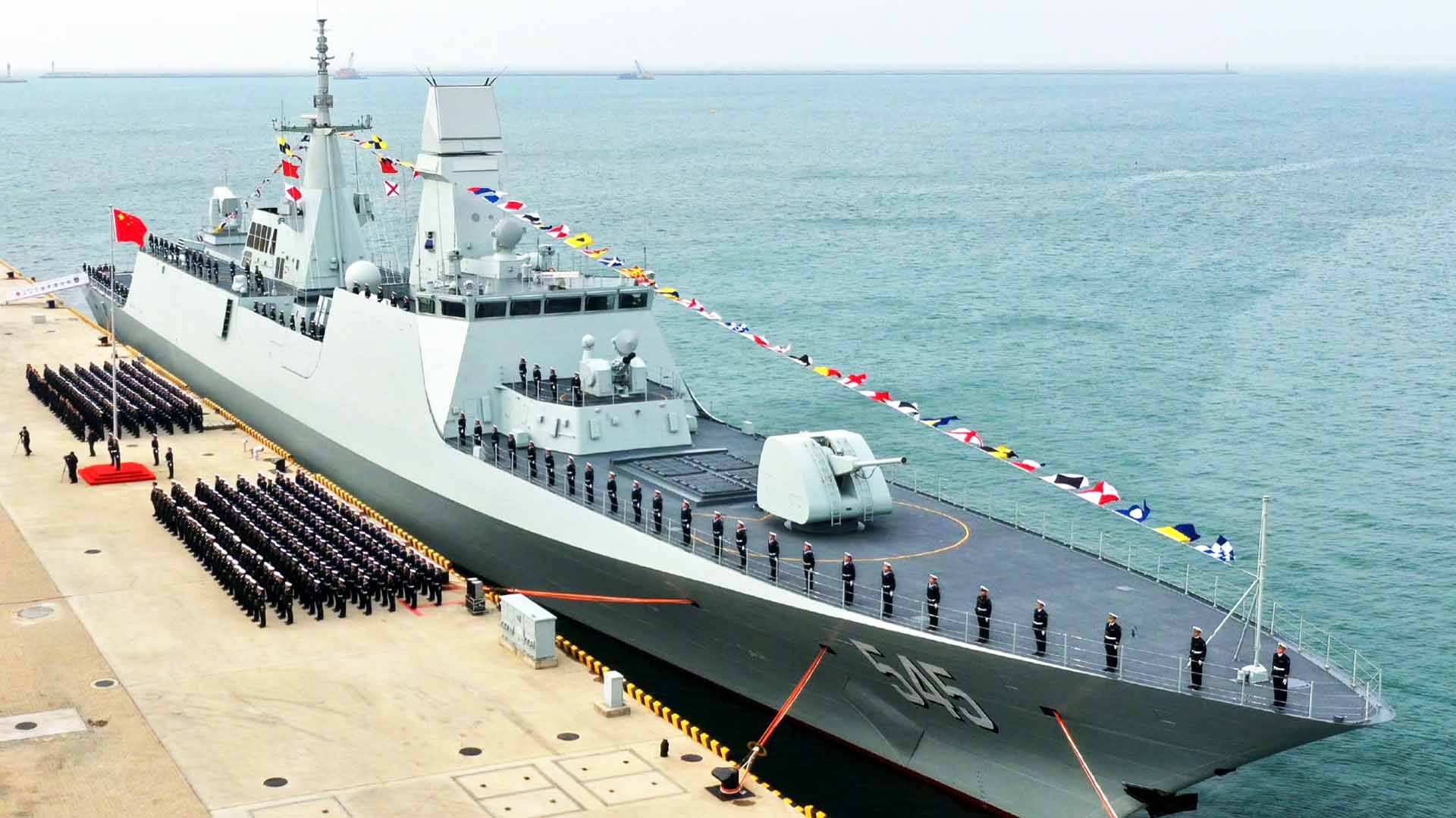China’s first Type 054B frigate, the Luohe, was commissioned into the People’s Liberation Army Navy (PLAN) on Wednesday. The PLAN’s newest warship is purportedly bristling with advanced features. Its commissioning follows a Pentagon warning late last year about Beijing’s growing ability to quickly churn out high-end vessels as part of a rapidly expanding fleet with increasing reach across the globe. The ship class, referred to by the U.S. and NATO as the Jiangkai III class, could eventually become the backbone of China’s combat fleet in the future, although Luohe and a second Type 054B are believed to be the only two built thus far.
The Luohe was commissioned at the Qingdao Comprehensive Support Base, situated just across the Yellow Sea from South Korea. The ship was launched in 2023 and underwent sea trials last year. While Beijing released few technical details on the vessel, online posts citing the government state that the ship displaces about 5,000 tons. It is also believed to be longer and more capable of future system upgrades than its predecessor, the Type 054A.

The Type 054B also suggests a stealthier design, with its clean superstructure and overall shaping helping to reduce its radar cross section. In that respect, the warship is similar to the French Aquitaine class frigate, which adopted similar signature-reduction aspects, among many others that have or are adopting similar design traits around the globe to enhance survivability.
TWZ reached out to PLAN analyst Alex Luck Wednesday after Luohe was launched. Images released online reveal some aspects of Beijing’s latest warship, but not necessarily the entirety of Type 054B’s innovation. While Luohe and the ships that will follow in the class bear similarities to China’s older 054A frigate, this latest frigate is a design that appears to be focused on further reducing reliance on legacy Russian-derived equipment, instead focusing on all indigenous systems, the Australia-based Luck said.
While some unknowns exist regarding the Luohe, Luck noted that the sensor array seen in images is entirely new compared to Type 054A. That sensor fit includes a two-sided, rotating electronically scanned array (AESA) primary radar atop the main mast and what appears to be an electronic warfare system extending out of either side of the secondary mast’s midpoint.
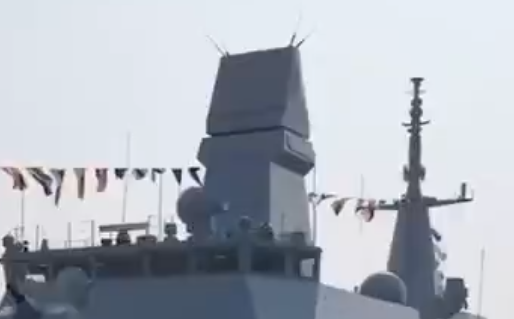
“The ship seems to do away with the dedicated illumination radars for [HQ-16 medium-range surface-to-air missile] guidance, but it’s not clear how integration has changed exactly in this regard,” he said. “It’s possible the design uses an improved HQ-16 missile to go with the new sensors, but that’s speculative too. Either way, in sensor fit, the ship notably moves away from the Russian tech base used to develop hardware such as the Type 382 and 366 radars and the MR-90 illuminators fitted to Type 054A.”
Among other changes between the Luohe and its Type 054A predecessors, the new frigate is fitted with what appears to be an improved version of the H/PJ-87 100mm gun as its main deck gun. Previously, Chinese frigates sported the 76mm as standard fit, although two Type 054 frigates did at one point sport 100mm guns, Luck said.

Behind that gun and just in front of the superstructure there is a Type 1130 close-in defense weapon system with an 11-barrel Gatling-type rotary barrel cannon. Go here to read past TWZ coverage of the system, along with its land-based application.

Luohe has largely the same 32-cell Vertical Launching System (VLS) configuration as Type 054As, capable of firing HQ-16 and Yu-8 missiles.

It also has dual quad box-like missile launchers amidships that fire YJ-83 anti-ship cruise missiles (ASCMs), Luck said. The propulsion system features a combined diesel and diesel engine, but Luck noted that he originally expected the Type 054B class to feature a gas turbine.

The frigate boasts a larger hangar than the Type 054A, and can host the Z-20F, a multirole maritime helicopter that mirrors the U.S. Navy’s SH-60 Seahawk. The Z-20 would provide a critical piece to the Type 045B’s anti-submarine warfare (ASW) capabilities, but could also undertake other missions, likely including anti-surface warfare.
The latest batch of Type 054As can also accommodate the Z-20, Luck said, “so this may support the idea that PLAN keeps relying on the 054A for shorter term requirements while they test and improve the Type 054B.”
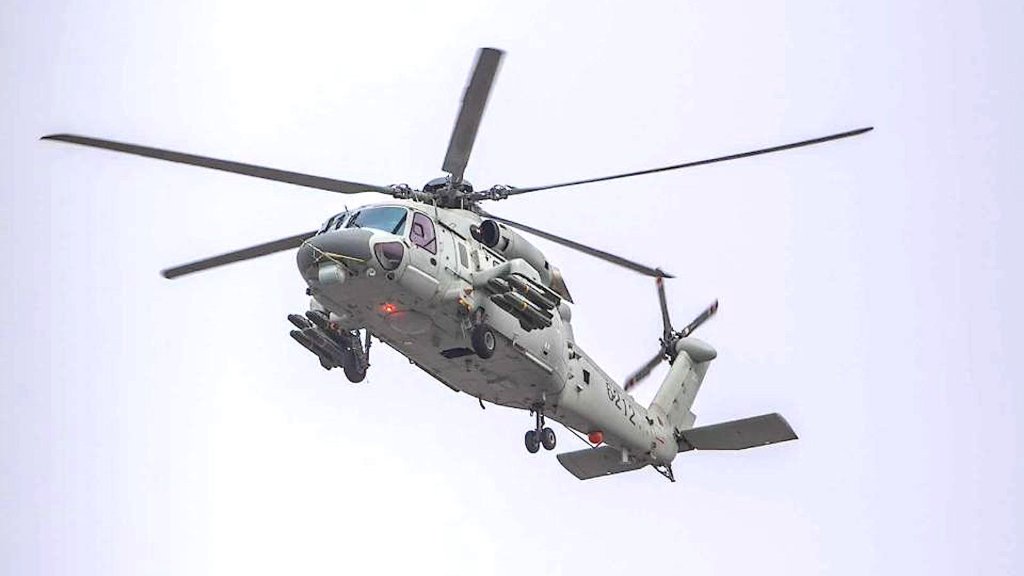
In addition, the Type 054B features box-like Type 726 launchers mounted on either side aft of the superstructure. The 24-cell launchers can be loaded with infrared decoy flares, active decoys equipped with small radio-frequency jammers, anti-submarine rockets armed with small depth charges and cartridges full of radar-obscuring chaff.
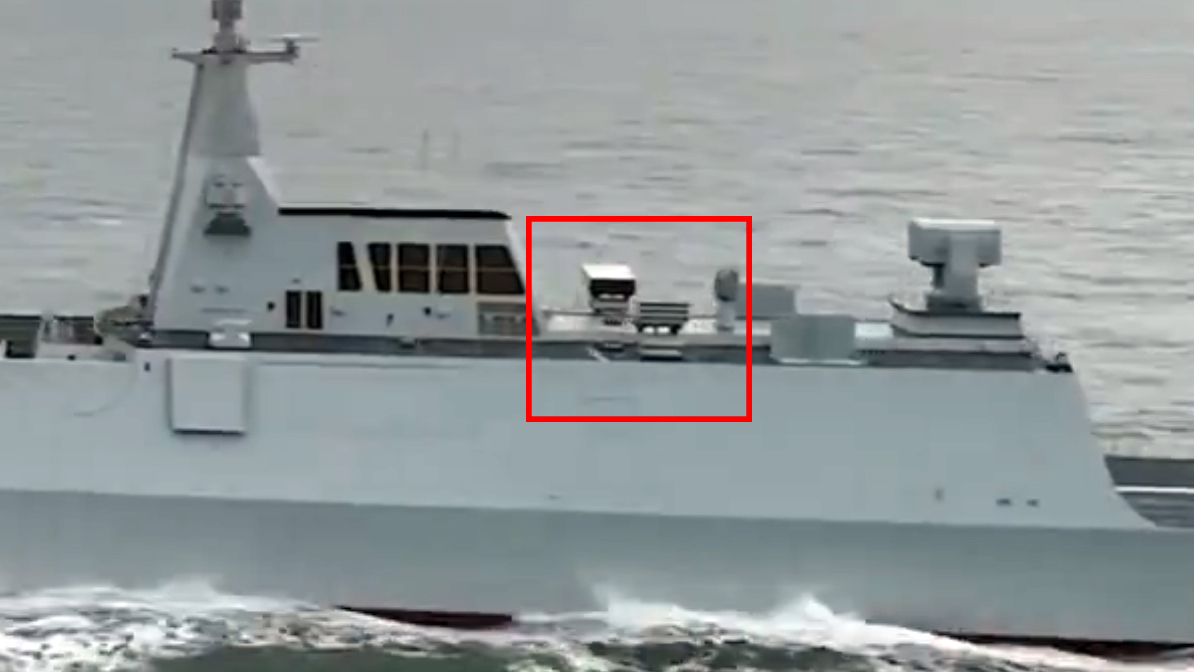
The Luohe also sports the HQ-10, the PLAN’s rough equivelant of the U.S.-built RIM-116 Rolling Airframe Missile (RAM) system. This, combined with the Type 1130 gun system, provides relatively robust close-in defensive capabilities.

Online spotters have already noted that the class will carry bow sonar arrays, along with fittings for towed-array sonar (TAS) and variable-depth sonar (VDS) at the stern.
The Type 054B class could also operate vertical takeoff and landing (VTOL) drones, like the type that has already conducted trials on the aircraft carrier Shandong, which you can read more about here. More advanced types are also in the works as China pushes ahead with unmanned aircraft technologies on all fronts.
Luck said the PLAN doesn’t appear intent on embarking on a Type 054B building spree just yet, and has noted in his writing how the Luohe and a second frigate are the only ships in the class to be built thus far.
“I think 054B mostly fits the established approach of PLAN when it comes to inducting new combatant designs,” he told TWZ. “Which means they are quite cautious, initially building a small number to figure out a new design and then either confirm the configuration for mass production or make some changes before they do so. The only notable aberration in that regard was [the Type 055 destroyer], which the builders immediately laid down in numbers.”
While the Luohe bears some similarities to the Type 054A, which numbers more than 40 ships of different variants first entering service in 2008, Luck said the new frigate is “a far more modern design,” and he suspects its true innovations may be lurking belowdecks.

“Some of the most interesting things about an efficient and modern naval combatant are not very visible from the outside, such as how its command-and-control work, how crew spaces are reconfigured to improve performance including with a possibly smaller crew and so on,” he said. “I think a few significant changes are on the inside and we have to see more imagery of the ships in service to figure some of these out.”
Another big question is cost. If this ship can offer relatively robust capabilities at low cost and build times, it could really help the PLAN’s massive fleet expansion initiative.
Luohe’s debut comes as the U.S. Navy stumbles through its own Constellation class frigate acquisition program, which is at least three years behind schedule. Despite being based on an existing Fregata Europa Multi-Missione (FREMM) parent design, the future warship is suffering “unplanned weight growth” that could lead to a loss of speed. While the Constellation began having about 85 percent commonality with the parent design, that has plunged roughly 15 percent following Navy design changes, USNI News’ Mallory Shelbourne reported in May.
While much about the Type 054B is still to be learned, the class is yet another factor in what the U.S. Navy has identified as a huge disparity between Chinese and U.S. capacity to build new naval vessels and total naval force sizes. As The War Zone previously reported, the Office of Naval Intelligence believes Chinese shipbuilders are more than 200 times more capable of producing surface warships and submarines.
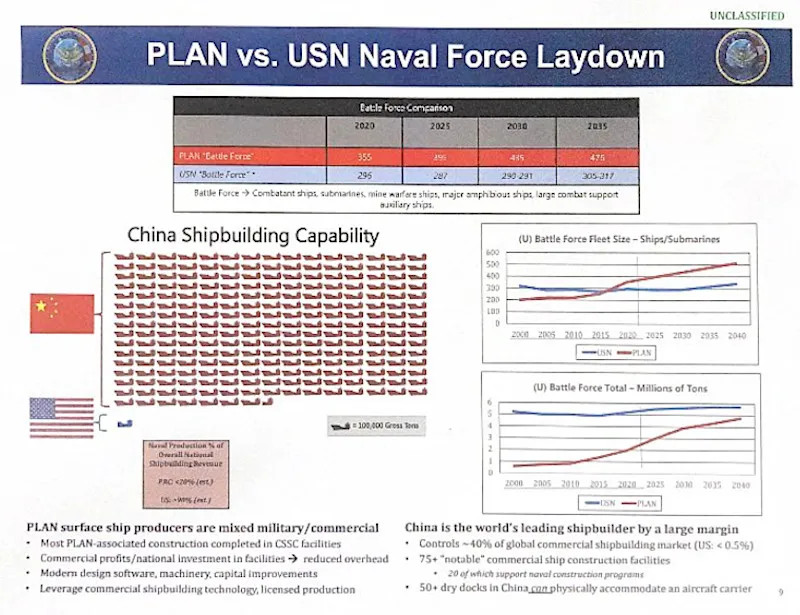
By most recent estimates, China’s fleet numbers more than 370 vessels, while the U.S. Navy battle force sits at less than 300. This disparity only looks set to grow as China continues its shipbuilding campaign with a huge shipyard capacity advantage over the U.S., and as the U.S. Navy continues to fumble its future shipbuilding agenda against many competing fiscal priorities.
Email the author: geoff@twz.com
